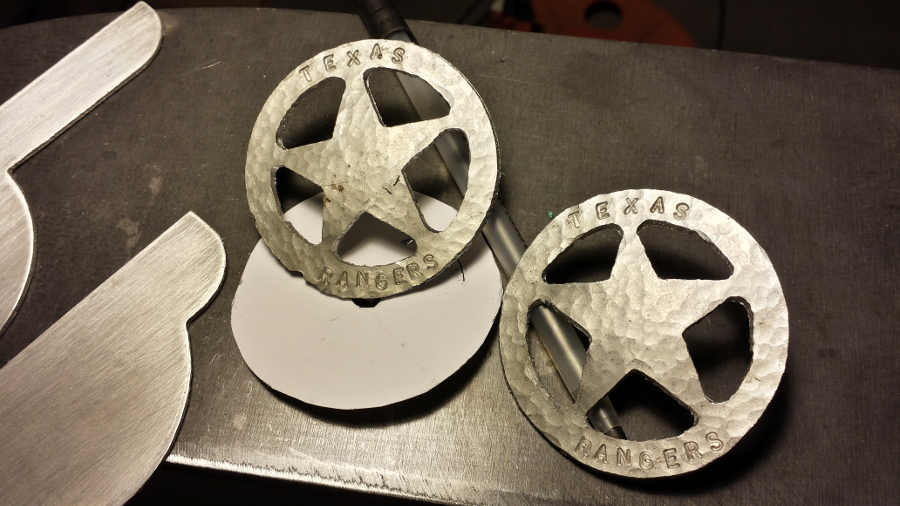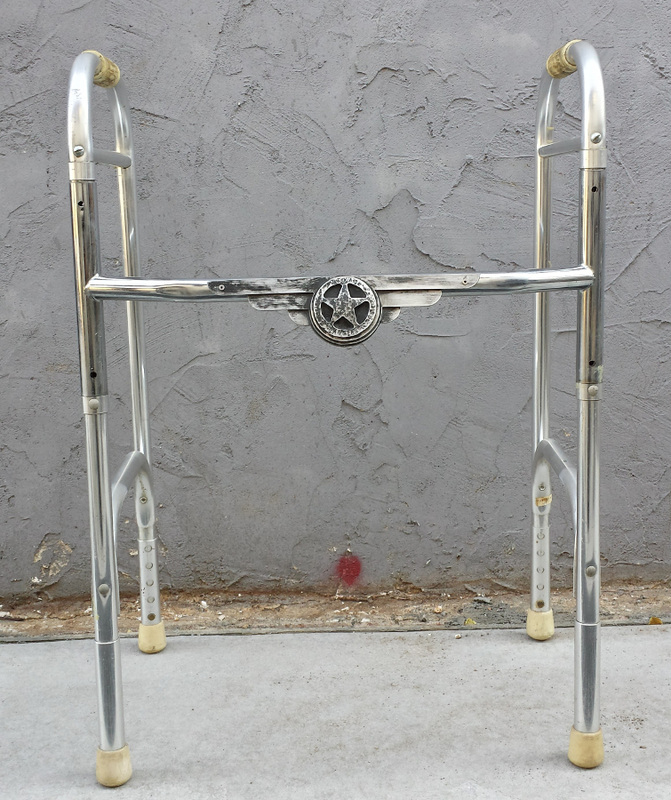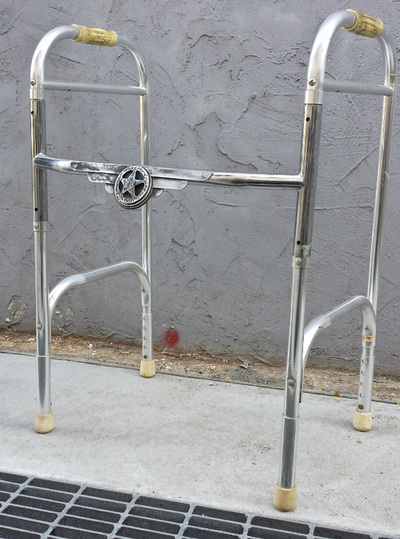|
I have had this idea to liberate my Grandfather's (on my dad's side) walker he used until He was 99 years old. Here my Grandfather Louie, and my Aunt are pictured in 1920's in front of the house they moved by horses over two days, two miles to another location across the street where the Navajo Hogan was later built. I remember we use to go the nursing home to see Louie, my father made him walk down the hall every day. My Grandfather had gone to the hospital a few years earlier, and when he was in bed for a week with his knees bent, no one though much of it. As it turned out his hamstrings contracted and he could no longer straighten his legs. So my father had him exercise to increase the range of movement in his legs. Anyway, I ran across his walker in storage some 34 years later, and decided to put new energy to an object most people think represents a handicap. I saw a TED talk about an English woman Sue Austin who opened my eyes to how enabling wheel chairs are to those who can not get around without them. She would go diving in the ocean with her wheel chair, to compare SCUBA to the wheel chair. Humans are handicap to stay under water for extended lengths of time without SCUBA equipment, but it has a stigma of being adventurous, unlike the wheel chair, or a walker. I chose to use a reference to a powerful hero from Texas. The synonym of the name Walker here helps my cause to shed a new light on an object society sees as sad or a burden on a person, whereas it liberates them to get out in the world. the streamline back drop; to speak of the time the walker was made. Pictured below the badge assembled prior to patina work. presenting: Walker Texas Rangers
0 Comments
Leave a Reply. |
Daniel RomanoArtist/Designer/Sculptor Archives
September 2022
CategoriesCopyright © 2022
All Rights Reserved ROMANODANIEL |












 RSS Feed
RSS Feed
